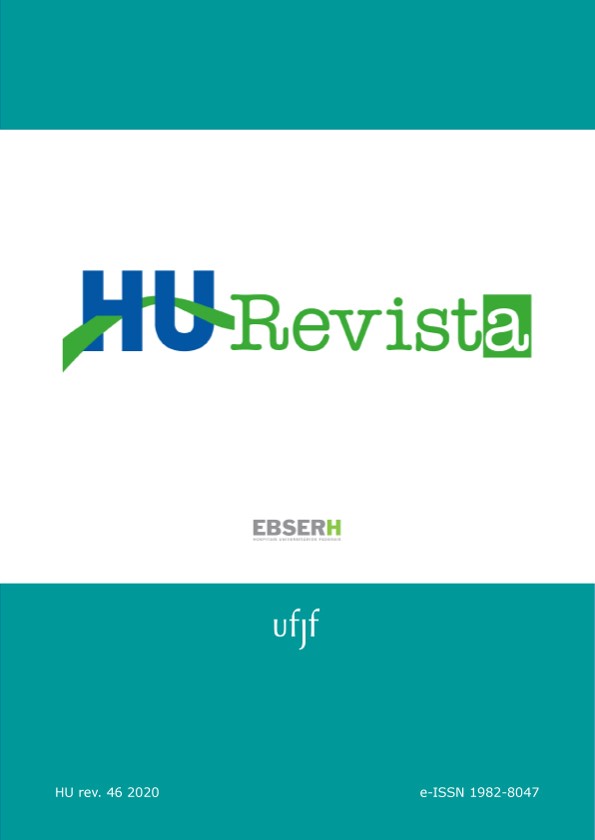Current aspects of guided endodontics
DOI:
https://doi.org/10.34019/1982-8047.2020.v46.29153Keywords:
Dental Pulp Calcification, Endodontics, Cone-beam Computed Tomography, Secondary Dentin, Dental Pulp CavityAbstract
Introduction: Endodontics is a specialty in Dentistry constantly contemplated with technological and scientific innovations, aiming to make root canal treatment more efficient. However, some clinical procedures to resolve complex cases, such as severe calcifications and the removal of glass fiber posts, can compromise the viability of teeth. In this context, Guided Endodontics, or endoguide, emerged, meaning an association between cone beam computed tomography (CBCT), intraoral scanning and three-dimensional (3D) printing, with endodontic treatment. This technique allows, through acrylic guides fixed in the mouth, a cavity access drill to be guided inside the canal, preventing eventual deviations and unnecessary dentin wear, ensuring an excellent access. Purpose: To review the current literature on the use of the endoguide, highlighting its advantages, disadvantages, and the procedure for performing it. Materials and Methods: Complete scientific articles in English, obtained from PubMed database, published from 2013 to 2020 were analyzed, using “endoguide” or “guided endodontics” as keywords. Results: The endoguide proved to be effective, regardless of the skill and experience of the operator, allowing access to teeth with obliterated canals, with minimal dentin wear, avoiding deviations and increasing the success rates of endodontic treatment. The main disadvantages are the high cost and the difficulty of installation in the posterior region of the mouth. Conclusion: The endoguide represented a huge advance in current Endodontics and has much to offer, preserving dental structure and saving clinical time in solving complex cases.
Downloads
References
Buchgreits J, Buchgreits M, Mortensen D, Bjorndal L. Guided access cavity preparation using cone-beam computed tomography and optical surface scans: an ex vivo study. Int Endod J. 2016; 49(8):790-5.
Zehnder MS, Connert T, Weiger R, Krastl G, Kuhl S. Guided endodontics: accuracy of a novel method for guided access cavity preparation and root canal location. Int Endod J. 2016; 49(10):966-72.
Connert T, Zehnder MS, Weiger R, Kuhl S, Krastl G. Microguided endodontics: accuracy of a miniaturized technique for apically extended access cavity preparation in anterior teeth. Int Endod J. 2017; 43(5):787-90.
Krastl G, Zehnder MS, Connert T, Weiger R, Kuhl S. Guided endodontics: a novel treatment approach for teeth with pulp canal calcification and apical pathology. Dent Traumatol. 2016; 32(3):240-6.
Connert T, Krug R, Eggmann F, Emsermann I, Elayouti A, Wieger R, Kuhl S, Krastl G. Guided endodontics versus conventional access cavity preparation: a comparative study on substance loss using 3-dimensional–printed teeth. J Endod. 2019; 45(3):327-31.
Kfir A, Telishevsky-strauss Y, Leitner A, Metzger Z. The diagnosis and conservative treatment of a complex type 3 dens invaginatus using cone beam computed tomography (CBCT) and 3D plastic models. Int Endod J. 2013; 46(3):275-88.
Zubizarreta-Macho A, Ferreiroa A, Agustín-Panadero R, Rico-Romano C, Lobo-Galindo AB, Mena-Álvez J. Endodontic re-treatment and restorative treatment of a dens invaginatus type II through new Technologies. J Clin Exp Dent. 2019; 11(6):570-6.
Van der Meer WJ, Vissink A, NG YL, Gulabivala K. 3D Computer aided treatment planning in endodontics. J Dent. 2016; 45:67-72.
Toubes KMS, Oliveira PAD, Machado SN, Pelosi V, Nunes E, Silveira FF. Clinical approach to pulp canal obliteration: a case series. Iran Endod J. 2017; 12(4):527-33.
Mená-Álvarez J, Rico-Romano C, Lobo-Galindo AB, Zubizarreta-Macho A. Endodontic treatment of dens evaginatus by performing a splint guided access cavity. J Esthet Restor Dent. 2017; 29(6):396-402.
Lara-Mendes STO, Barbosa CFM, Machado VC, Santa-Rosa CC. A new approach for minimally invasive access to severely calcified anterior teeth using the guided endodontics technique. J Endod. 2018; 44(10):1578-82.
Lara-Mendes STO, Barbosa CFM, Santa-Rosa CC, Machado VC. Guided endodontic access in maxillary molars using cone-beam computed tomography and computer-aided design/computer-aided manufacturing system: a case report. J Endod. 2018; 44(5):875-9.
Shi X, Zhao S, Wang W, Jiang Q. Novel navigation technique for the endodontic treatment of a molar with pulp canal calcification and apical pathology. Aust Endod J. 2018; 44(1):66-70.
Reich M, Brullmann D. Guided endodontics: einblick in eine neue therapievariante zur behandlung obliterierter zähne mit apikaler parodontitis. Quintessenz. 2018; 69(9):1062-69.
Torres A, Shaheen E, Lambrechts P, Politis C, Jacobs R. Microguided Endodontics: a case report of a maxillary lateral incisor with pulp canal obliteration and apical periodontitis. Int Endod J. 2019; 52(4):540-9.
Maia LM, Machado VC, Silva NRFA, Júnior MB, Silveira RR, Júnior GM, Sobrinho APR. Case reports in maxillary posterior teeth by guided endodontic access. J Endod. 2019; 45(2):214-8.
Maia LM, Júnior GM, Albuquerque RC, Machado VC, Silva NRFA, Hauss DD, Silveira RR. Three-dimensional endodontic guide for adhesive fiber post removal: a dental technique. J Prosthet Dent. 2019; 121(3):387-90.
Schwindling FS, Tasaka A, Hilgenfeld T, Rammelsberg P, Zenthofer A. Three-dimensional-guided removal and preparation of dental root posts-concept and feasibility. J Prosthodont Res. 2019; pii:S1883-1958(18):30403-1.
Buchgreitz J, Buchgreitz M, BJorndal L. Guided endodontics modified for treating molars by using an intracoronal guide technique. J Endod. 2019; 45(6):818-23.
Casadei BA, Lara-Mendes STO, Barbosa CFM, Araújo CV, Freitas CA, Machado VC, Santa-Rosa CC. Access to original canal trajectory after deviation and perforation with guided endodontic assistance. Aust Endod J. 2019. doi: 10.1111/aej.12360. [Epub ahead of print]
Nayak A, Jain PK, Kankar PK. Progress and issues related to designing and 3d printing of endodontic guide. In: Chandrasekhar U, Yang LJ, Gowthaman S (eds) Innovative Design, Analysis and Development Practices in Aerospace and Automotive Engineering (I-DAD 2018). Lecture notes in mechanical engineering. Singapore: Springer; 2019. p.331-337.
Moreno-Rabié C, Torres A, Lambrechts P, Jacobs R. Clinical applications, accuracy and limitations of guided endodontics: a systematic review. Int Endod J. 2020; 53(2):214-31.
Downloads
Published
How to Cite
Issue
Section
License
Cessão de Primeira Publicação à HU Revista
Os autores mantém todos os direitos autorais sobre a publicação, sem restrições, e concedem à HU Revista o direito de primeira publicação, com o trabalho licenciado sob a Licença Creative Commons Attribution que permite o compartilhamento irrestrito do trabalho, com reconhecimento da autoria e crédito pela citação de publicação inicial nesta revista, referenciando inclusive seu DOI.









